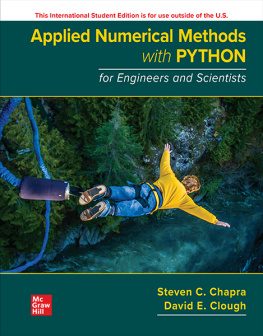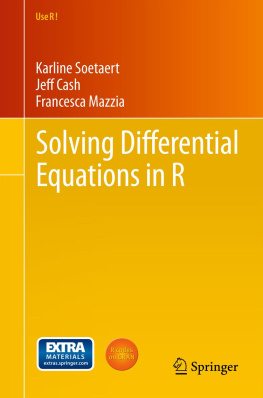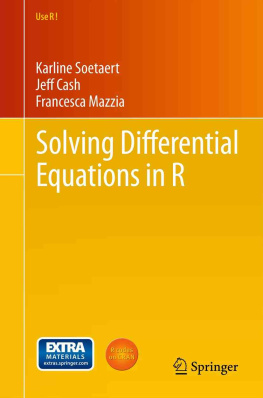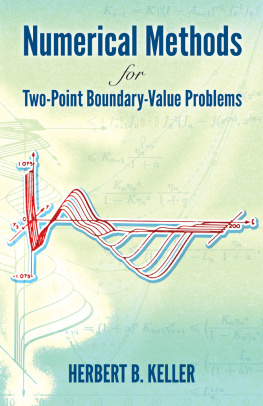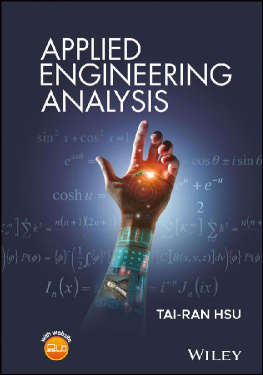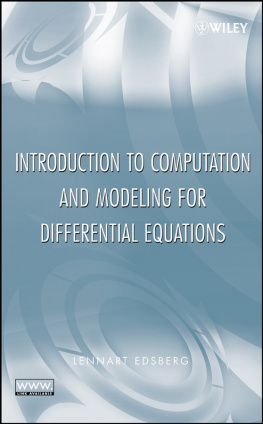George F. Pinder - Numerical Methods for Solving Partial Differential Equations: A Comprehensive Introduction for Scientists and Engineers
Here you can read online George F. Pinder - Numerical Methods for Solving Partial Differential Equations: A Comprehensive Introduction for Scientists and Engineers full text of the book (entire story) in english for free. Download pdf and epub, get meaning, cover and reviews about this ebook. year: 2018, publisher: Wiley, genre: Science. Description of the work, (preface) as well as reviews are available. Best literature library LitArk.com created for fans of good reading and offers a wide selection of genres:
Romance novel
Science fiction
Adventure
Detective
Science
History
Home and family
Prose
Art
Politics
Computer
Non-fiction
Religion
Business
Children
Humor
Choose a favorite category and find really read worthwhile books. Enjoy immersion in the world of imagination, feel the emotions of the characters or learn something new for yourself, make an fascinating discovery.
- Book:Numerical Methods for Solving Partial Differential Equations: A Comprehensive Introduction for Scientists and Engineers
- Author:
- Publisher:Wiley
- Genre:
- Year:2018
- Rating:3 / 5
- Favourites:Add to favourites
- Your mark:
Numerical Methods for Solving Partial Differential Equations: A Comprehensive Introduction for Scientists and Engineers: summary, description and annotation
We offer to read an annotation, description, summary or preface (depends on what the author of the book "Numerical Methods for Solving Partial Differential Equations: A Comprehensive Introduction for Scientists and Engineers" wrote himself). If you haven't found the necessary information about the book — write in the comments, we will try to find it.
This book offers a systematic, highly accessible presentation of numerical methods used to simulate the behavior of physical-chemical systems. Unlike most books on the subject, it focuses on methodology rather than specific applications. Written for students and professionals across an array of scientific and engineering disciplines and with varying levels of experience with applied mathematics, it provides comprehensive descriptions of numerical methods without requiring an advanced mathematical background.
Based on its authors more than forty years of experience teaching numerical methods to engineering students,Numerical Methods for Solving Partial Differential Equationspresents the fundamentals of all of the commonly used numerical methods for solving differential equations at a level appropriate for advanced undergraduates and first-year graduate students in science and engineering. Throughout, elementary examples show how numerical methods are used to solve generic versions of equations that arise in many scientific and engineering disciplines. In writing it, the author took pains to ensure that no assumptions were made about the background discipline of the reader.
Covers the spectrum of numerical methods that are used to simulate the behavior of physical-chemical systems that occur in science and engineering Written by a professor of engineering with more than forty years of experience teaching numerical methods to engineers Requires only elementary knowledge of differential equations and matrix algebra to master the material Designed to teach students to understand, appreciate and apply the basic mathematics and equations on which Mathcad and similar commercial software packages are based Comprehensive yet accessible to readers with limited mathematical knowledge,Numerical Methods for Solving Partial DifferentialEquationsis an excellent text for advanced undergraduates and first-year graduate students in the sciences and engineering. It is also a valuable working reference for professionals in engineering, physics, chemistry, computer science, and applied mathematics.
George F. Pinder: author's other books
Who wrote Numerical Methods for Solving Partial Differential Equations: A Comprehensive Introduction for Scientists and Engineers? Find out the surname, the name of the author of the book and a list of all author's works by series.



